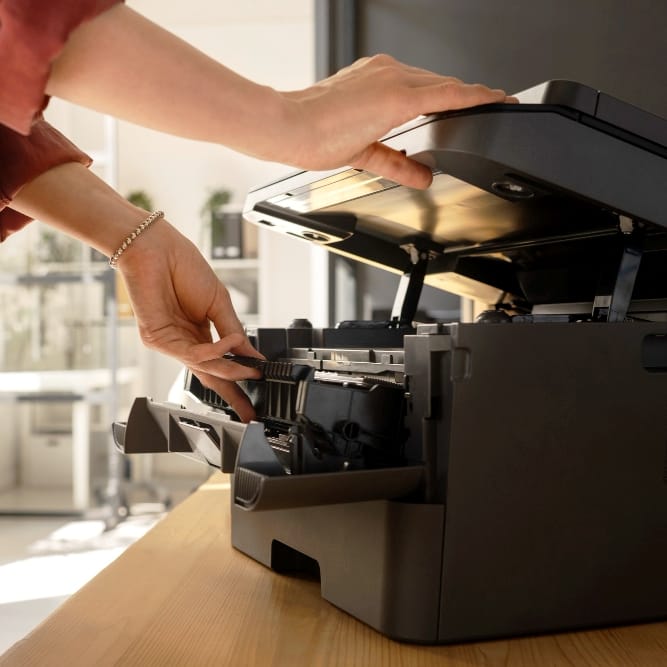Security is paramount for any business. Our CCTV Camera Installation & Configuration services provide comprehensive surveillance solutions tailored to your specific needs.
We offer Site Assessment, Camera Selection, Professional Installation, Recording System Setup, Remote Monitoring etc.
Investing in a professional CCTV system is crucial.
CCTV Camera Installation & Configuration
In today’s world, ensuring the safety and security of our homes and businesses is paramount. One of the most effective ways to achieve this is through a well-planned and properly implemented CCTV surveillance system.
But simply purchasing cameras isn’t enough. Proper CCTV Camera Installation and meticulous CCTV Camera Configuration are key to maximizing the system’s effectiveness. Let’s explore the essential steps involved.

Why CCTV Camera Installation need proper planning?
Before diving in, planning is crucial. Consider these factors when deciding where to place your cameras:
- Coverage Area: Identify critical areas you want to monitor, such as entrances, exits, parking lots, and valuable assets.
- Lighting Conditions: Evaluate the lighting in each area at different times of the day. Poor lighting can significantly impact the quality of your footage.
- Obstructions: Ensure clear lines of sight, free from trees, walls, or other obstructions.
- Power Source: Plan for readily available power outlets or consider Power over Ethernet (PoE) cameras.
Steps followed in CCTV Camera Installation
Once you’ve mapped out your installation plan, the physical installation can begin. This typically involves:
- Mounting the Cameras: Securely mount the cameras to walls, ceilings, or poles using appropriate hardware.
- Wiring: Run the necessary cables (power and video) from the cameras to the recording device (DVR or NVR).
- Connections: Connect the cables to the cameras and the recording device, ensuring secure and proper connections. Careful cable management is essential for a clean and professional installation.
CCTV Camera Configuration: Fine-Tuning for Optimal Performance
With the cameras physically installed, the next step is CCTV Camera Configuration. This involves setting up the software and hardware aspects of your system to ensure optimal performance and recording. Here’s a breakdown of the key steps:
- Network Setup: Connect your DVR/NVR to your network. This allows for remote viewing and access to your camera system.
- Camera Registration: Add and register each camera to the DVR/NVR. This involves assigning each camera a unique name and IP address.
- Recording Settings: Configure recording schedules, resolution, frame rate, and storage settings. Consider motion detection recording to conserve storage space.
- Motion Detection: Set up motion detection zones and sensitivity levels to trigger recordings when movement is detected. This helps to focus on relevant events and avoid recording unnecessary footage.
- Remote Access: Configure remote access to your camera system, allowing you to view your cameras from your smartphone, tablet, or computer, no matter where you are.
- User Accounts: Create and manage user accounts with different access levels to protect your system from unauthorized access.
Proper CCTV Camera Installation and thorough CCTV Camera Configuration are the cornerstones of a robust security system. By carefully planning and executing these steps, we can maximize the effectiveness of our surveillance efforts and achieve greater peace of mind. Remember that if you’re unsure about any aspect of the installation or configuration process, it’s always best to consult with a qualified professional. They can provide expert guidance and ensure your system is set up correctly for optimal performance and security.
Schedule a free consulting call with a representative
Related Services
There are many different types of website development and digital marketing services available, and the right ones for your business will depend on your specific needs and goals. Here are a few other types of networking and surveillance services:

Networking with WAN/LAN for Office Setup
Whether you have a single office or multiple locations, we can design and implement a network infrastructure that meets your specific needs through our Networking with WAN/LAN for Office Setup expertise.

Windows Server with Active Directory & Email Server
A Windows Server with Active Directory & Email Server setup provides a centralized platform for managing users, resources, and communications within your organization.

Printer Installation & Configuration
In any office environment, reliable printing is essential. Our Printer Installation & Configuration services ensure seamless integration of printers into your network. We take the hassle out of printer setup and maintenance.